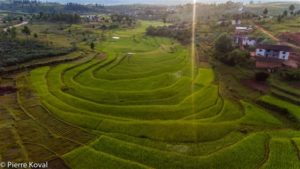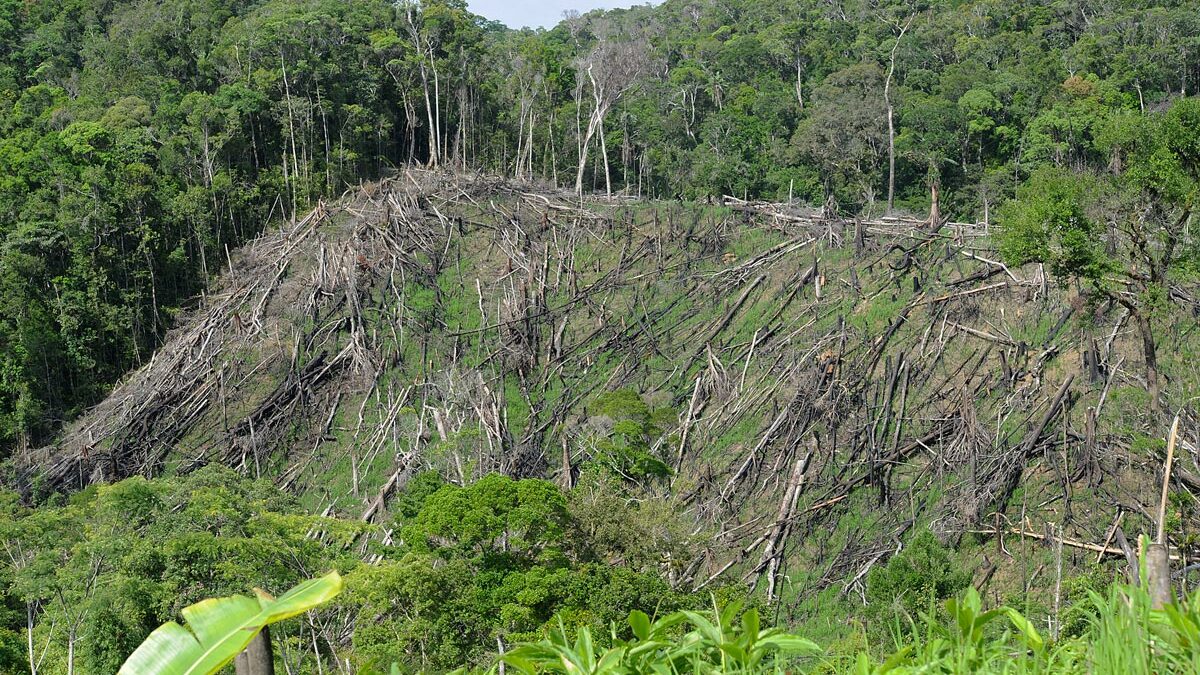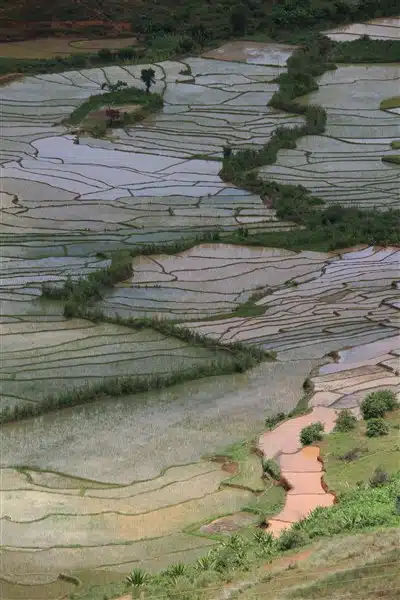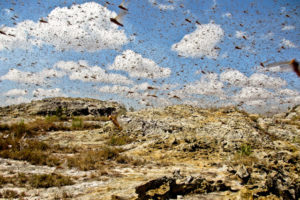Rice cultivation in Madagascar
Cultivation of irrigated rice
Rice plays a fundamental role in the lives of the majority of the Malagasy population. It represents the essential part of their diet (an average of 120 kg per person per year). But its cultural and symbolic capital is as important as its economic capital. It is almost impossible to imagine a meal (including breakfast) without rice, the side dishes are often minimalistic, while the quantities of rice are gigantic. The rice cultivation landscapes are very diverse: rice field terraces lining the valley bottoms, 
In the highlands, rice cultivation combines checkerboard plots in adjacent valleys with large valley plots. Farmers work wonders to control the water, which they fear may be scarce or in excess.
Transplanting reduces water-related risks and weed competition.
Wet rice cultivation (flooded or irrigated) dominates the agricultural landscape in the highlands.
Manual plowing (turning with a spade)
The soil of the rice field is turned over with the help of a spade. Angady, a type of spade with a long and narrow iron blade and a heavy wooden handle, turned. Entire mountains and vast landscapes on the highlands have been dug with the spade over generations.
The rice fields are a secular heritage of ancestors who fed generations for centuries, they are considered the most important part of the indigenous culture along with the Zebu population.
Plowing, Harrowing, and Leveling
The trampling of rice fields by Zebus is gradually disappearing. The plow and harrow, pulled by two Zebus, are used for plowing.
Crushed stones are used until a liquid mud is formed.
Irrigation
Water supply in the valleys is provided by springs – water that circulates from property to property due to gravity – and in the valleys by rivers, which are usually dammed. A peripheral channel protects the rice fields from the flowing water that runs down the hills during the rainy season.
Ditches and Dams
The drainage and irrigation network ensures regular flooding of the plots. The dikes separate the rice fields, keeping them safe. Water flows back and serves as pathways. The steeper the slope, the smaller the plots and the embankment network.
Rice Harvest
Harvesting is done with a sickle, a very time-consuming method that has been used for centuries.
The sheaves are laid in a row on the ground and then transported to the threshing floor.
Threshing
Threshing is done on mats by beating the sheaves on a large stone or rock to separate the rice grains along with the husk from the straw, which are then collected.
The women then sort the rice, which is stored in silos or granaries.
Slash-and-burn rice cultivation, also known as “Tavy”.
Rice is harvested. Grown on the eastern slope of the island, a forested mountain region with hot and humid climate. The term “tavy” refers to both the plot in the middle of the forest and the cultivation method: shifting cultivation, slash-and-burn after clearing. This system requires an axe and a long-handled knife, but no soil tillage.
Land Clearing
Once the vegetation is cut and dried, firebreaks are created in front and behind the plot 
Seeding takes place after burning, just before the expected rain.
Seeding and Plot Maintenance
Rice grains are buried in pits dug with a digging stick. Until the first ears appear, the plot is regularly weeded by hand.
Harvest
Growth with this method takes four to six months.
The cut ears are dried by hand on the burned logs, which are lying on the ground or on a large mat.
The plot will then lie fallow for several years.








